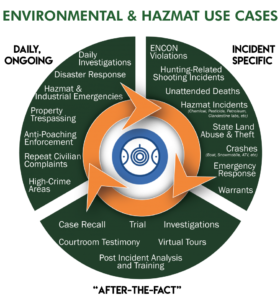Opening day is almost here! What are some hunting safety tips you need to know before heading out for deer season?

For many serious hunters, opening day is their favorite day of the year. Individuals take the day off of work and head out to hit their first big buck. Before you kick-off deer season, we have compiled a short list of hunting safety tips to help keep you safe and alert this year.
Hunting accidents can be preventable. According to the DEC (Department of Environmental Conservation), in 2017 alone 19 hunting related shooting incidents were reported, and 11 of those (58%) involved the violation of a hunting law or regulation (Dec.ny.gov). Don’t be a number, exercise caution and preparedness when you head into the woods.
Hunting Safety Tips:
- Be familiar with your firearm.
Gun safety is one of the most important aspects of hunting safety. Be familiar with the firearms you are taking into the woods. Handle every gun and weapon as if it is always loaded and don’t rely on the gun’s safety mechanism. Control the muzzle of the firearm and never point it at yourself or someone in your party. When aiming and shooting, be certain of the target and what may be in front of or behind it. Keep your finger outside of the trigger guard until you are actually ready to shoot. Never drink or do any drugs while handling a weapon. If your gun misfires, treat the gun as if it could fire at any moment. For additional firearms & muzzle loading safety, visit any of the links below:
– The Ten Commandments of Firearms Safety
– NSSF – The Firearms Trade Association
– Georgia Wildlife Hunting Safety Tips
- Make sure someone knows where you are (and YOU know where you are).
Always tell someone where you are going, when you are expected to get home and what to do if you don’t come home. You never know what can happen in the woods alone. It is important to have a plan as well as plan ahead for the worst case scenario. Especially in the northeast – as the weather gets colder, time can mean the difference between life and death, should you become stranded in the woods. Make sure your cell phone is fully charged, and you know where you are planning to hunt. It’s best if you’re familiar with the area. Have tools with you to help you get your bearings if you do become lost (compass, GPS, cell phone. etc.).
- Be prepared!
Be prepared before you head out for the day. Ensure your cell phone is charged, dress appropriately for the season and weather, and always have an emergency kit with you. This kit might include a flashlight, matches or a lighter, a compass, extra water, sunscreen, a blanket, and rain gear. A map of the area (if available) is always helpful too.
- Exercise Caution when using a tree stand.
“Of the 600,000 deer hunters expected [to hunt on opening day].. four out of five will use a tree stand” (Milwaukee Journal Sentinel). Hunting accidents involving tree stands are now the leading cause of hunting-related incidents and deaths. Tree stand safety is a mandatory portion of all hunter training courses, as tree stands are used by 84% of firearms hunters and 97% of bow hunters. In order to stay safe when using a tree stand, always read all of the directions and understand how to use the stand, ensure your harness is correct and connected, never hurry while using your tree stand, and practice using your tree stand at ground level before you climb up. Inspect your tree stand before and after each use.
- Be visible.
Be familiar with the hunting season and your state laws and hunting regulations. For example – in Georgia, when hunting on private land, hunters are required to wear 500 square inches of hunter orange above the waist. If you hunt with dogs, ensure they are wearing appropriate hunting gear (brightly colored vests, etc.), and make sure your party is visible when moving through the woods. The International Hunter Education Association (IHEA) offers a breakdown of hunter orange requirements by state.
- Attend a training course.
Hunting safety courses are available throughout the country, and are often required in order to obtain a hunting license. Even if a course is not required in your state, it is always beneficial to be knowledgeable about rules and regulations. Avoid potential accidents or tickets. Some online courses are also available, if you are unable to attend an in-person training.
- Know the rules – they exist for a reason.
Being familiar with hunting safety rules should be a no-brainer. If you need help finding your local or state laws, visit the National Shooting Sports Federation website for an interactive map. Knowing the rules protects yourself and others, by minimizing the risk of a hunting related shooting incident occurring in the first place.

L-Tron’s OSCR360 is assisting DEC Officers and Parks Police to investigate shooting related incidents and hunting accidents. OSCR has partnered with Law Enforcement to investigate several large cases in NY – including an incident where a hunter accidentally shot a propane tank. OSCR helps to demonstrate the point of view of the hunter, the path of a bullet and captures the present scene. Pictures of the scene and all of the evidence can be contained in the OSCR360 software. Judges and grand juries can walk-through the scene, view all of the evidence together and see exactly what the hunter saw.
Investigator John Dobies (Ret.) describes how OSCR has helped him to organize all of his digital evidence and DSLR photos, and show the trajectory of a shot. He explains how the view of the shooter and the view from the victim tell the entire story.

Questions? Interested in learning more about how OSCR can assist with hunting accidents?
Get in touch with the L-Tron team.
Call 800-830-9523 or Email info@L-Tron.com